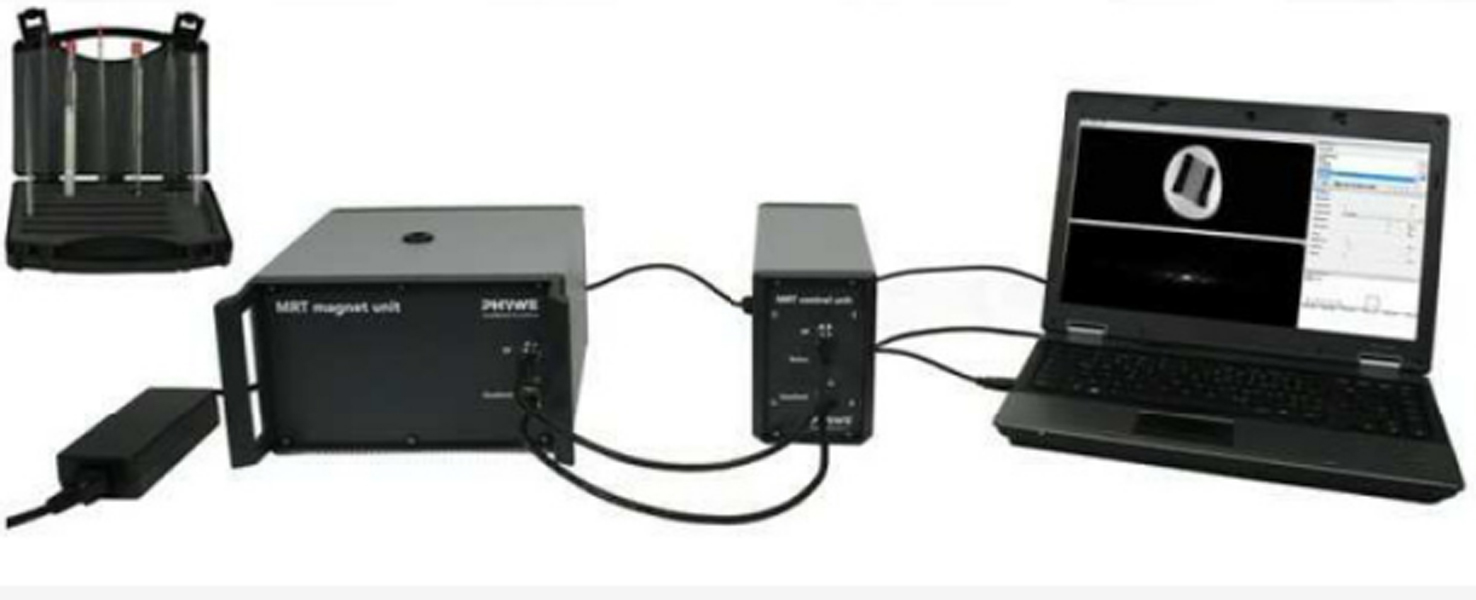Spatial encoding in Nuclear Magnetic Resonance

It should be demonstrated how spatial encoding does work in the MR technology. Experiments are executed with a MRT training device giving the opportunity ton investigate some small probes in the sample chamber. Device control is done with the provided software. Investigations comprise the generation of a 1D spatial encoding procedure via an additional magnetic field gradient in the driection of encoding and the visualizations of spatiotemporal T1- and T2-profiles. T1 and T2 are specific to the particular sample material and thus give important evidence for the composition of the subject of investigation.
- Complete, easy to install and affordable MRT education system
- One system to cover all aspects from NMR basics to sophisticated 2D and 3D imaging sequences
- Detailed experiment guides included with the system
- Learning results guaranteed thanks to easy to manage course steps
- Can be set up at any location in the student lab
PHYWE Compact magnetic resonance tomograph (MRT)
- 1D spatial encoding via a magnetic field gradient (frequency coding).
- Visualization of spatiotemporal T1-profiles in spatial encoding direction.
- Visualization of spatiotemporal T2-profiles in spatial encoding direction.
- Nuclear spins
- Precession of nuclear spins
- Resonance condition, MR frequency
- MR flip angle
- FID signal (Free Induction Decay)
- Magnetic gradient fields
- Spatial encoding (frequency coding)
- Fast-Fourier-Transformation (FFT)
- T1/T2 relaxation times
- Spin-lattice relaxation
- Spin-spin relaxation
- Dephasing
